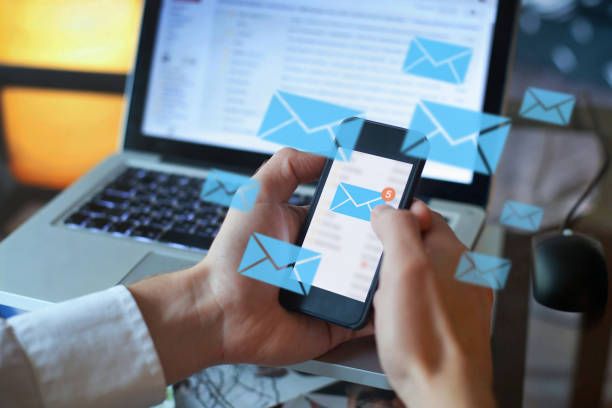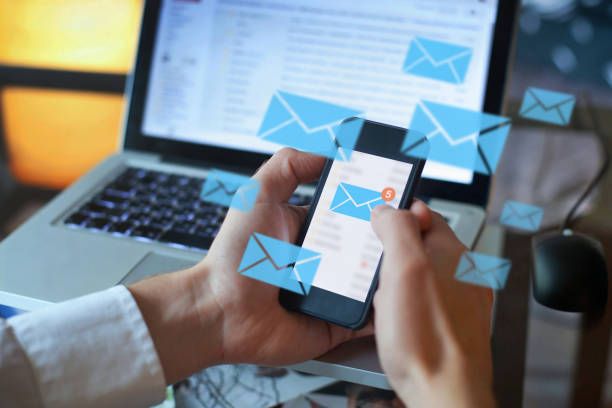In today's digital age, email communication plays a vital role in both personal and professional settings. However, it can be incredibly frustrating when your carefully crafted emails bounce back, leaving you uncertain whether your message reached its intended recipient. Email bounce back occurs when an email fails to deliver to the recipient's inbox, resulting in a "bounced" message notification. In this comprehensive guide, we'll explore the causes of email bounce back and provide you with expert tips to ensure your emails are delivered successfully.
Understanding Email Bounce Back

When an email fails to reach its intended recipient, it is referred to as a bounce back. There are two types of email bounces: hard bounces and soft bounces. A hard bounce occurs when an email is permanently rejected due to an invalid email address or a non-existent domain. On the other hand, a soft bounce is a temporary failure that can occur due to a full mailbox, server issues, or content-related problems. While occasional bounces are inevitable, consistently high bounce rates can harm your sender reputation and impact email deliverability.
Causes of Email Bounce Back

- Invalid or Non-existent Email Addresses: One of the most common reasons for email bounce back is sending emails to invalid or non-existent email addresses. It is crucial to maintain a clean and updated email list by regularly validating and removing inactive or invalid addresses. Implementing double opt-in processes during email subscriptions can also help ensure accurate email addresses.
- Full Mailboxes: When a recipient's mailbox reaches its storage limit, any new incoming emails will bounce back. This can happen when individuals forget to clear their mailbox or have set a low storage quota. Encouraging recipients to regularly manage their mailbox and providing instructions on how to increase storage capacity can help mitigate this issue.
- Server Issues: Temporary server problems can cause soft bounces. These issues may include server downtime, network congestion, or configuration errors. Monitoring your email server's performance and ensuring reliable infrastructure can help minimize the impact of server-related bounce backs.
- Content-related Problems: Certain email content can trigger spam filters or email security measures, resulting in bounce backs. Common issues include using excessive capital letters, spam-triggering keywords, or attaching large files that exceed the recipient's email size limit. Composing emails with relevant and personalized content, avoiding spammy language, and using appropriate attachments can prevent content-related bounce backs.
- Blacklisting: If your email server or domain is blacklisted due to suspected spamming or other malicious activities, your emails may bounce back. Regularly monitoring blacklists and implementing best practices for email marketing can help prevent blacklisting and ensure deliverability.

Strategies to Prevent Email Bounce Back

- Maintain a Clean Email List: Regularly clean and validate your email list to remove invalid or non-existent email addresses. Use email validation tools to identify and eliminate incorrect addresses. Implementing double opt-in processes during email subscriptions can also help ensure accuracy.
- Monitor Email Deliverability: Track your email deliverability rates and identify any patterns of bounce backs. Monitoring your email server's performance and reputation can help identify and resolve issues promptly.
- Use Email Authentication: Implement email authentication protocols such as SPF (Sender Policy Framework), DKIM (DomainKeys Identified Mail), and DMARC (Domain-based Message Authentication, Reporting, and Conformance) to verify your email sender identity and prevent spoofing or phishing attempts.
- Optimize Email Content: Craft your email content carefully to avoid triggering spam filters. Personalize your emails, avoid excessive use of capital letters or spam-triggering keywords, and ensure that attachments are within acceptable size limits.
- Respect Recipient Preferences: Honor recipient preferences regarding email frequency, content, and unsubscribing. Providing clear and accessible unsubscribe options can help maintain a healthy sender reputation and reduce bounce backs.
Frequently Asked Questions (FAQs):
Q1. How can I check if my emails are bouncing back?
A1. Monitor your email server logs or use email tracking tools that provide bounce back notifications and reports. Additionally, regularly reviewing your email deliverability rates can indicate any issues with bounce backs.
Q2. Are bounce backs always my fault?
A2. Not necessarily. While some bounce backs can be attributed to incorrect email practices, others can be caused by factors beyond your control, such as temporary server issues or recipient mailbox problems.
Q3. Can bounce backs affect my sender reputation?
A3. Yes, consistently high bounce rates can harm your sender reputation and impact email deliverability. ISPs and email service providers monitor bounce rates as a measure of email sender reliability.
Q4. How often should I clean my email list?
A4. It is recommended to clean your email list regularly, preferably before each major email campaign. You can also set up automated processes to validate and remove invalid addresses on an ongoing basis.
Q5. What should I do if my emails are consistently bouncing back?
A5. If your emails are consistently bouncing back, it's important to investigate the root cause. Check for any issues with your email server, verify your email list for accuracy, and review your email content for potential triggers.
Conclusion
Email bounce back can be a frustrating experience that hinders effective communication. By understanding the causes of bounce backs and implementing the strategies outlined in this comprehensive guide, you can significantly improve your email deliverability and ensure that your messages reach their intended recipients. Remember to maintain a clean email list, monitor deliverability rates, use email authentication protocols, optimize your email content, and respect recipient preferences. With these expert tips, you can stop email bounce back and maximize the impact of your email communications.

